Prepper fitness almost inevitably gets brought up in survival forums and blogs. However, it is always treated as an afterthought. “I’ll worry about fitness after I get all my food/water/gear/etc. stockpiled.”
If past disasters have taught us anything, it is we can’t count on our stockpiled goods to get us through. The best survival resource we have at our disposal is ourselves, so we should start looking at physical fitness as an integral part of disaster prepping.
Are You Fit for Survival?
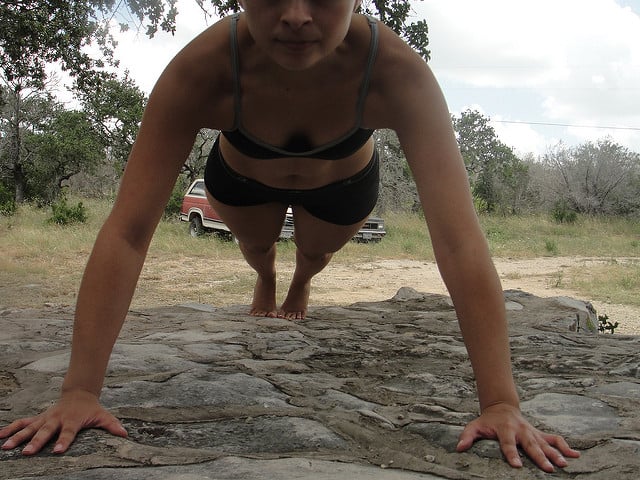
There are a lot of great survival schools in the country. Some courses will give you a taste of how physically demanding survival is. However, most of us haven’t been tested in an actual SHTF situation.
So, why do so many unfit preppers think they’d survive alright?
The Over-Reliance On Firearms for Survival
While going through Prepper Forums, I came across this comment:
In a SHTF world I don’t think we’d need to be superfit to survive would we? As long as our trigger finger (for gun or crossbow) is in good shape we should be able to do alright. We’d just either barricade ourselves in our home with our food/water stockpile and sit tight, or travel to an out-of-town bugout location by vehicle or bike and sit tight there. We wouldn’t even need to run after game, because no animal can outrun a bullet, crossbow bolt or arrow.
This guy has obviously never had to run through a minefield while being fired at by snipers. I doubt he has ever even been hunting. Even in the best-planned conditions, hunting still requires a lot of physical skill, like endurance and strength, to carry a heavy weapon for long periods of time.
As a whole, preppers are overly reliant on their firearms. If your entire prepping plan comes down to “stock more bullets,” then you are probably not physically fit for survival.
Adrenaline Will Not Save You
We’ve all heard stories about how adrenaline allows us to perform superhuman feats, mothers being able to lift cars off their children.
In highly stressful situations, adrenaline and cortisol do increase our physical abilities. However, the science shows that these effects are exaggerated. If you can normally lift 100 lbs, stress might help you lift 130 lbs – but not a 3,000lb car!
The effect would be short-lived, even if adrenaline could turn us into superhumans. Once the surge of adrenaline wears off, you feel incredibly fatigued. You wouldn’t be ready for the next threat in a survival situation.
Prepper Fitness Requirements
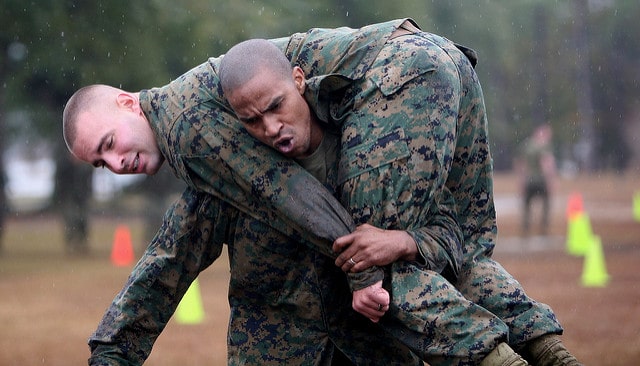
Before starting any prepper fitness routine, you need to establish your goals.
Here are some prepper baselines to consider.
Can You…
- Walk 12 hours while carrying a heavy pack?
- Lug 2 ½ gallons of water in each hand back to camp from a stream 3 miles away?
- Carry a 150lb person on your back?
- Scale a wall?
- Maneuver on crutches?
- Swim across the lake located nearest to you?
- Run 5 miles over hilly terrain?
The 10 Prepper Fitness Skills
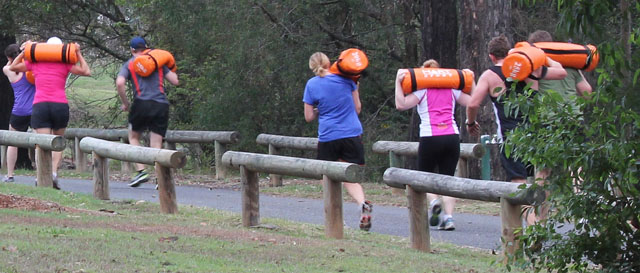
“Fitness” can be broken down into 10 individual skills. These same skills also apply to prepper fitness.
There are some differences – like the difference between going for a casual run and having to run away from an attacker. However, the skills are fundamentally the same.
1. Cardiovascular Fitness/Endurance
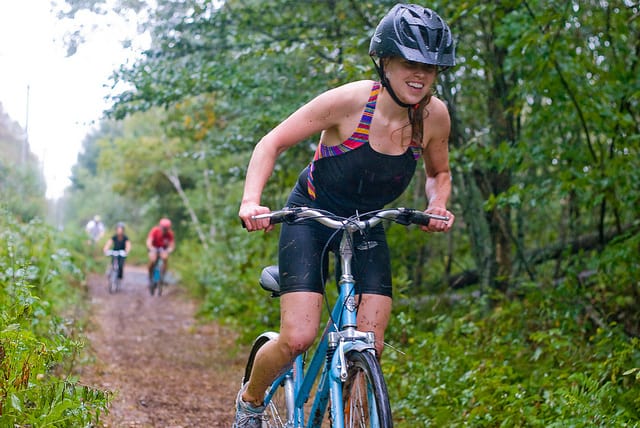
I probably don’t have to tell you how vital cardio health is for survival. You won’t make it very far if you are wheezing at tasks like hiking, chopping wood, or rowing. Running is one of the easiest ways to improve your cardiovascular fitness.
Example: Being able to walk/run for hours when fleeing a disaster zone.
2. Stamina

Also referred to as muscular endurance, stamina is how long your body can perform repeated muscle contractions. Stamina is built by doing weighted exercises. The key is to perform lower-weight exercises at higher repetitions.
Example: Chopping and stacking firewood for an entire day.
3. Strength
Go to a gym, and you’ll see many people obsessed with strength training. However, remember that having strong muscles is only one prepper fitness skill. If those muscles aren’t also flexible and have cardio endurance to back them up, the strength is only helpful in situations where you need a lot of power output.
Example: Lifting concrete rubble from a blocked passageway, such as when trapped during an earthquake.
4. Flexibility
Yoga has become very popular with women, but it is still taboo for men to work on their flexibility. Just look at any ripped jock in the gym. They can lift heavy weights, but those muscles will snap quickly if pressure is exerted in the wrong direction!
You’ll need to work on both static and dynamic flexibility. If you don’t, your likelihood of injury while doing other prepper fitness skills increases.
Example: Pull someone over a wall without pulling your rotator cuff.
5. Balance

Now, we arrive at the neurological fitness skills. These skills are trained through practice. By contrast, the organic fitness skills listed above (endurance, stamina, strength, flexibility) produce observable changes in the body.
Balance is a very good skill to have in outdoor survival situations. I can’t count the number of times I’ve had to cross streams by stone-hopping or balancing on logs.
Example: Crossing a log bridge over a river.
6. Accuracy
Accuracy is “The ability to control movement in a given direction or at a given intensity.” This prepper fitness skill is essential for many homesteading tasks, such as chopping wood, driving stakes, and plowing.
Example: Throwing a heavy spear and hitting your target.
7. Agility
Agility is “applying explosive movements to change directions rapidly.” I can’t help but think of my Bosnian friends for this one. During the Siege of Sarajevo, people had to regularly run across “Sniper Alley” on their way to collect water and supplies. Speed was important, but the agile ones who could change directions, like cats, would be harder targets for the snipers.
Example: Avoiding gunfire while fleeing.
8. Coordination
It wasn’t until I tried bow hunting that I realized my coordination needed work. You’ve got to have a good sense of spatial orientation and rhythm so you can react quickly. To practice coordination, try playing catch, learn to juggle, or jump roping.
Example: Running through rough terrain without twisting an ankle or getting whacked in the head by branches.
9. Speed
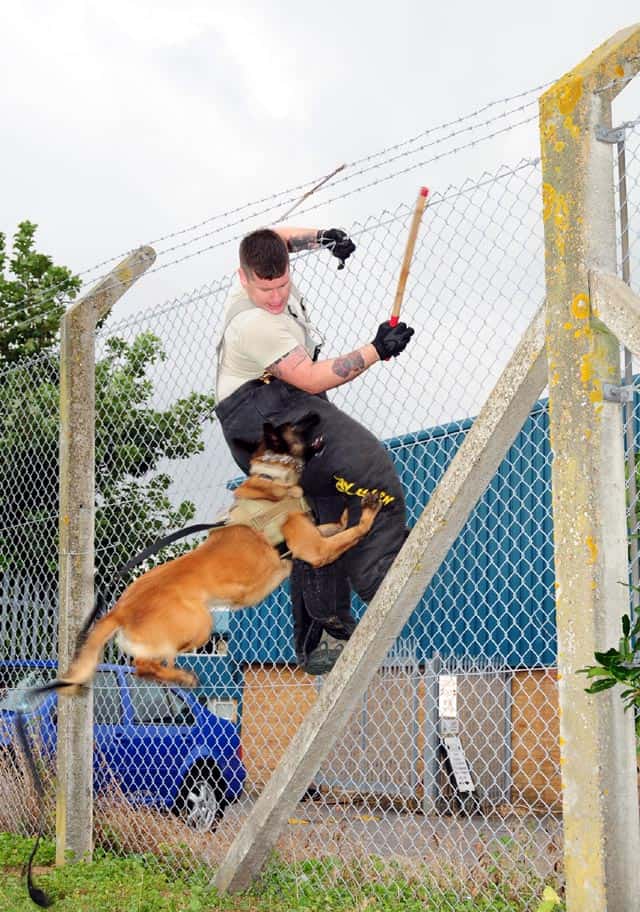
Speed and power are a combination of organic and neurological skills. They require both physical training and practice.
A bit part of speed is reaction time. You can be the fastest runner in the group – if it takes you a long time to react, you could be the one who falls victim.
Balance exercises are particularly good for improving reaction time. You can also play card games like “Slapjack.” But remember that having a clear head – free of stress and alcohol – is also essential for reaction time.
Example: Outrunning an attacker.
10. Power
Power is a combination of strength and speed. A considerable amount of strength being released quickly results in high power.
Jumping sports like basketball and volleyball require a lot of power. A big part of prepper fitness is learning how to utilize power. For example, I’m not strong enough to rip a standard door off the hinges. But, by running at the door at high speed, I could break it down.
Example: Jumping over a high fence.
Prepper Fitness Training
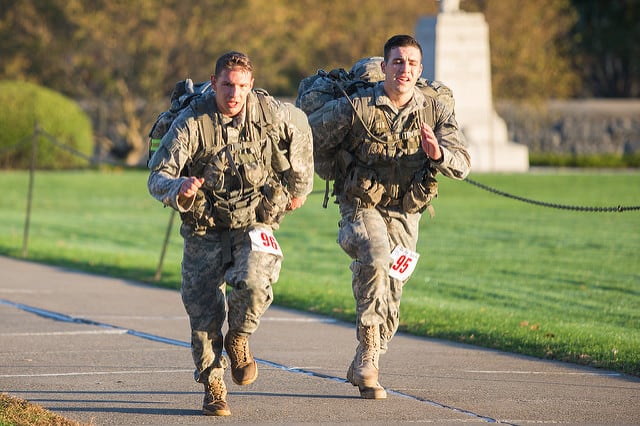
It’s easy to focus on one or two prepper fitness skills and consider yourself “ready.” However, total fitness depends on your mastery of all 10 fitness skills.
For example, a person who can easily beat the crap out of a 200lb attacker might not have such an easy time outrunning the attacker!
The good news is that you can practice multiple fitness skills at once. Here are just some examples of exercises preppers can do and what skills they develop.
| Activity | Fitness Skills Used |
|---|---|
| Backpacking/Hiking | Endurance, stamina, coordination, strength, agility |
| Orienteering | Endurance, stamina, coordination, agility, coordination, speed, power |
| Running | Endurance, stamina, agility, speed |
| Sprinting | Stamina, strength, agility, speed, power |
| Paintball | Endurance, stamina, coordination, strength, agility |
| Chopping firewood | Strength, stamina, accuracy, coordination, power |
| Rock climbing | Stamina, strength, flexibility, balance, coordination |
| Thai chi | Endurance, flexibility, strength, balance, coordination |
I tried to be a bit creative with these fitness activity ideas. You could do tons of traditional exercises that would help you develop prepper fitness. Krav Maga and CrossFit are two popular options with preppers. Boxing is also great, especially for neurological skills like increasing reaction time.
Are you working on your prepper fitness? What types of exercises are you doing?
Image 1190290/ by U.S. Air Force photo/Micah GarbarinoImage 2000112487, by U.S. Air Force photo/Karen Abeyasekere “Well Balanced” (CC BY-NC-ND 2.0) by garshna “#hiking #fitness #outdoors #adventure” (CC BY 2.0) by Bautz Adventure “IMG_8536” (CC BY-SA 2.0) by benwebboz “1st Workout of my Fitness Training with” (CC BY-ND 2.0) by reginarodriguez “141025-A-TW998-067” (CC BY-NC-ND 2.0) by West Point – The U.S. Military Academy “Fitness Test Shows Marines a Taste of Co” (CC BY 2.0) by DVIDSHUB “Action Sequence Joe” (CC BY-SA 2.0) by JimboRocks “To the Finish” (CC BY 2.0) by BozDoz


As a prepper with reduced mobility, many of these exercises are wayy out of my league. But I have my strengths too!
For example, I am a better swimmer than many people who still have all their limbs, and I am a decent sailor. With my crutches I can go just about anywhere, even over rough terrain. I am able to climb onto the roof of my van and haul myself up into a tree.
So, to all those around who have disabilities: you too can cultivate your own form of prepper fitness. Your body may not work in the same way as the bodies of strong healthy people, but it is far from useless. And having to constantly find adaptations to be able to accomplish things that most able bodied people do without thinking, you have developed an enormous creativity and problem solving power that will be extremely useful in a shtf situation.
So:
– First of all, avoid learned helplessness and gain as much autonomy as you possibly can even if this comes with a lot of extra pain and effort.
– Train what you can (upper body strength, reflexes, stealth… you name it!)
-Learn the skills that are accessible to You! An example: you may not be able to see or carry a person but don’t keep that from learning first aid and CPR.
– Get creative with low tech solutions, and if you can: study countries where disabled people do not have our modern mobility aids to learn how they get around. What did they invent to help them get through their daily “obstacle course”?
– Never give up: even if the body doesn’t cooperate one bit, you still have a decent brain. Use that to build up the survival knowledge and the skillsets that will make you too good to be left behind when everything falls apart.
Instead of being “a poor victim” and the object of pity, you can become a living example of strength and resilience.
Thanks for writing a excellent compilation of fitness traits.
In a true SHTF, the average, out-of-shape prepper forced to be on foot for more than a few hours or compelled to survive outdoors would be SOL.
May your excellent article inspire readers to get off the couch.
Focus on well-rounded exercises that improve your overall strength and stamina. In weightlifting these are sometimes called power or compound lifts, most of which we list below.
We should also take a look at our nutrition in order to increase our fitness levels. Some foods cause problems like joint inflammation, water retention, etc which affects the ability to perform and recover.
Your base lines (below) are probably great for most people under 40 years old, as the body can train to do this without breaking down as easy. When you reach my age (62), the base line changes (or should change). Most of the base line would be cut in half. Not saying it cannot be done, but not for most at my age.
Walk 12 hours while carrying a heavy pack? (maybe 6 before severe fatigue sets in)
Lug 2 ½ gallons of water in each hand back to camp from a stream 3 miles away? (Maybe a gallon and a half)
Carry a 150lb person on your back? (Maybe a child, and how far?)
Scale a wall? (how high, maybe 5-6 ft?)
Maneuver on crutches? (Tough one to judge)
Swim across the lake located nearest to you? (Maybe 75 yards without rest)
Run 5 miles over hilly terrain? (Maybe 2)
Just being very realistic about this and I do work out everyday (5 days a week) after work. Jog a mile and a half on a tread mill also use an elliptical, while doing other weight training and stretching exercises. I put in two sperate hours a day, one in the morning, one later afternoon. Then deal with all he muscle aches and pains, arthritis issues etc.. and still keep at it.
So lets give the older crowd a realistic “Base line”.
Just my 2 cents!
Yes very true Wayne, as with everything survival these articles can only provide generalized advice. You must tailor everything to your own situation.
There is free fitness equipment in parks and on hiking trails in Hong Kong. You’ll mostly see the elderly practicing on them, besides doing taichi.
UK also has some free open air gyms in parks.
If you want you can do something for your health.
Every little helps!
I’d like to encourage mid-life to elderly folks, particularly women, by saying it’s never to late to start working on strength, balance and aerobic abilities. Exercise programs (primarily strength training and balance exercises) are popping up across the country. I lead a group called Strong Women but there are a number of similar programs. You don’t need to join a gym – SW is free, most of my ladies wouldn’t attend with men anyway, and rural areas have these programs as well. Call a local Senior Center or Extension Office to see what your options might be as you don’t want to be the burden or the one left behind when emergencies hit. Grab a friend and walk the mall. Make sure you know how to get up off the floor by yourself. Use the school playground to build balance. Do what you are able and know that you can do more than you think you can. Have fun and build your confidence. I find that as we grow older and more sedentary, our bodies forget how to move but motion is lotion and moving feels so good.
Awesome comment Debbie and you are absolutely correct, the human body is an amazing thing. Staying fit is just another part of the prepping mindset and needs to be worked on like everything else.
Thank You very much Debbie. I was beginning to think us old fogies where being forgotten. I am now 78, a widow with a rare type of blood cancer and some other stuff but I am still alive and going. I had stored enough TP , paper towels, N95s (i gave to the local medics) medicines, dry food, canned foods from my garden and canned meats from the store, etc. to last 18mts or more. I also have a WORKING treadle sewing machine. I used my electric machine to sew and give Face masks to local nursing homes, neighbors, church members etc. I try to teach people how to do for them selves, only a very few will try. Thank you for encouraging others. BLESS YOU
Basic military training that even our reserves get, all of this and more. Just make sure you can get reservists like my son and his friends, into your 10′ underground survival shelter if possible.
I hear you Wolfgang